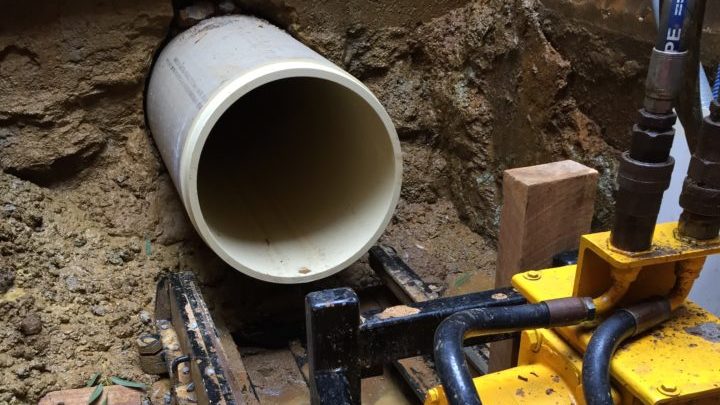In crowded urban areas, the installation of underground utilities can pose major disruption to the community and the surrounding environment. When considering environmental concerns and community impact, trenchless technologies such as microtunnelling can help mitigate concerns by minimising disruptions. It also benefits asset owners by reducing time costs and increasing accuracy.
In the past, when considering the installation of underground utilities contractors didn’t have access to trenchless technologies, and therefore more disruptive methods of installation were used, such as open cut trenching. Microtunnelling now offers an alternative, sustainable solution for installing pipelines quickly, accurately and with minimal disruption.
Considering the community
In high density areas it is now less acceptable to cause major disruption to communities such as through major traffic restrictions. Managing Director of Edge Underground, Stuart Harrison, said the impact on residents and businesses is always a concern when working with underground assets.
“Microtunnelling is a pit-launched technique with only an entry and exit pit required to be excavated for installation. This means destruction to surface infrastructure is limited and the road closures and community disruption are minimised,” Mr Harrison said.
“There’s a lot of potential damage to existing infrastructure or utilities by putting a new deep utility in. Microtunnelling allows installation through one small incision between the entry and exit pits, rather than having to tear the whole street open to do it, exposing already present underground infrastructure to the risk of damage.
“As there is minimal disruption, it’s more likely that projects will actually be able to commence, because the objections aren’t there. Especially since surface obstructions don’t present a problem.”
Furthermore, contractors with modular equipment, such as the AXIS boring system, can further reduce disruptions as the equipment layout can be adjusted to accommodate for jobsite considerations and operator preference.
A sustainable solution
Microtunnelling also has a number of environmental benefits, including minimal disruption the ground. When working within existing infrastructure, excavating large amounts of earth can unstabilise ground pressure. As a result of the imbalance, existing infrastructure can move as the ground moves. Microtunnelling only pulls out what earth is needed and leaves the surrounding ground in harmony, reducing the risk of damaging underground assets.
“Excavation leaves a long-lasting effect on the earth that has been in place for millions and billions of years. When you dig deep trenches you are interfering with nature’s harmony. The least amount of excavation represents the least amount of impact to nature,” Mr Harrison said.
“Microtunnelling involves the excavation of an entry and exit pit, with the ground between these points left undisturbed throughout the installation process, greatly reducing the impact to the surrounding environment.
“This also reduces the additional costs incurred from open trench methods which requires extensive site restoration, which can include footpaths, roads and vegetation.
“Microtunnelling also reduces other environmental costs that are not as obvious but are just as important to consider, such as the reduction of fuel and energy resources.”
Using a machine such as the Vermeer AXIS has further environmental benefits with a reduction of carbon emission.
An emissions study conducted by Dr Samuel T. Ariaratnam from Arizona State University compared the results of various trenchless methods, with the AXIS system conclusively presenting the least emissions.
A case for accuracy
While microtunnelling can mitigate these environmental and social disruptions, the AXIS system has been designed to do so without compromising on accuracy or productivity.
“The AXIS system uses a high end laser guidance system to position the target with live monitoring, allowing the operator to watch what is happening during the installation and make hydraulic steering corrections as needed. This means an accuracy of +/- 10mm accuracy is commonly achieved,” Mr Harrison said.
“Over the years I have worked with various microtunnelling equipment which might offer great benefits in one area, but at the expense of accuracy and productivity.
“AXIS doesn’t have this problem, it provides the benefits of being able to minimise disruptions while still being able to provide a high level of accuracy.”

